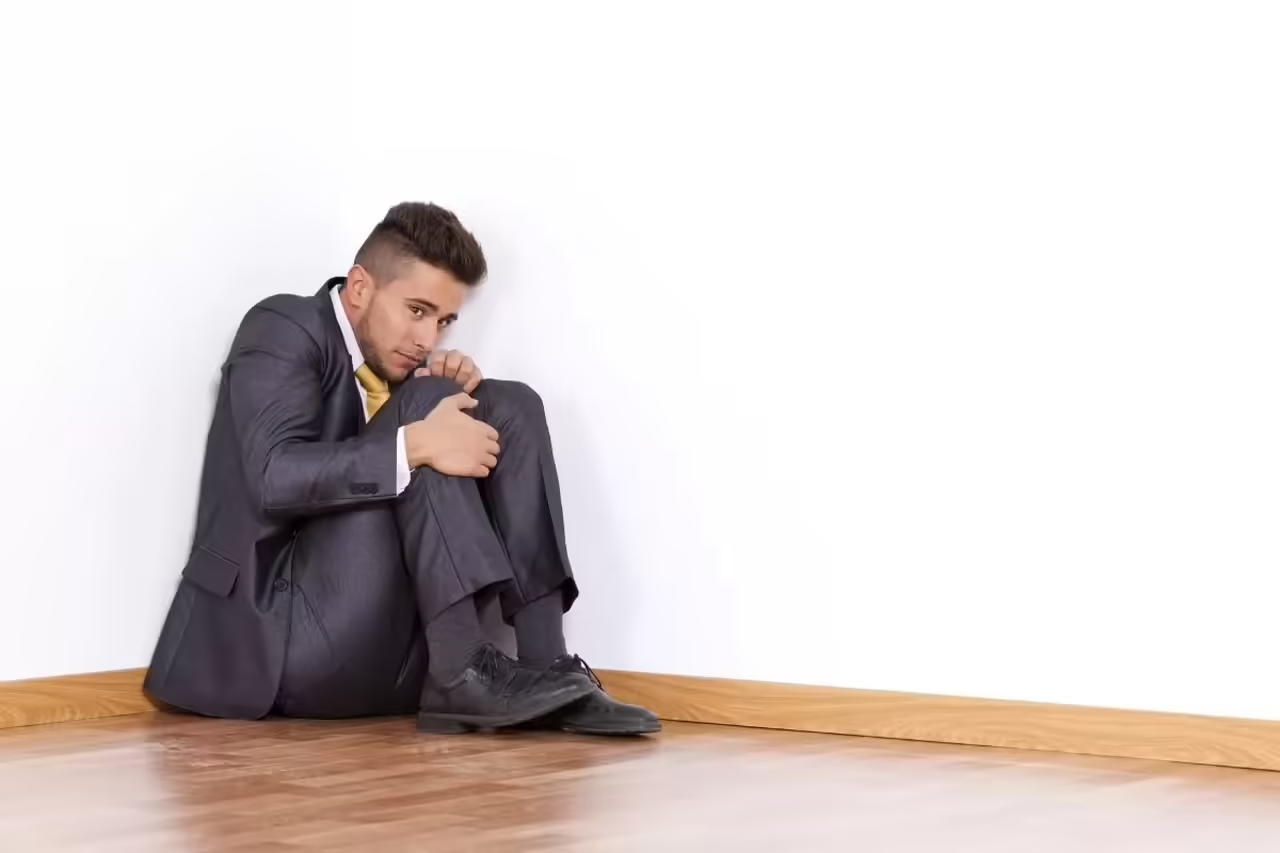
When fear makes us very vulnerable
Who hasn’t had (or has) a phobia in their lifetime? I, for example, had a phobia of spiders (arachnophobia), which seems to be one of the most common. Where do phobias come from? How do these irrational fears get installed in our brain? Our brain misinterprets a signal of real danger through thought, we believe that something threatens us and our organism responds to that threat, whether it is real or not. It is a survival mechanism.
The term “phobia” comes from the Greek word phobos, which means terror, fear. Phobias are a psychological disorder that has a wide incidence in the world population. Approximately one in twenty people suffers from a phobia of one type or another. What are they? The Diagnostic Manual of Mental Disorders (DSM-IV) defines them as a “marked and persistent fear that is excessive or irrational, triggered by the presence or anticipation of a specific object or situation”. A phobic person feels an exaggerated and unrealistic fear of certain situations or objects, and sometimes this can even cause physical discomfort: uncontrollable tremors, dizziness, excessive sweating, palpitations, anxiety, etc. In the most extreme cases, real panic attacks can occur (I can attest to this).
So far everything is normal, claustrophobia, hydrophobia, agoraphobia, arachnophobia, all are normal phobias, but did you know how many strange phobias there are in the world? I have come to find more than 500 and more than 50% of these are false, but among the doubtfully real ones there are for all tastes, and so rare, that you think… But can someone really have a phobia of this…?
We can find ourselves with aversions of various types, to approach certain people, if someone comes out screaming when he sees you, maybe it’s not your perfume, but that person suffers from:
Penthraphobia: Fear of mothers-in-law.
Syngenesophobia: Fear of relatives.
Soceraphobia: Fear of in-laws.
Cacophobia: fear of ugly people or of one’s own ugliness.
Caliginephobia: Fear of beautiful girls.
Cypridophobia: Fear of prostitutes.
Efebiphobia: Fear of teenagers.
Pedophobia: Fear of children.
Autophobia: fear of oneself.
Peladophobia: Fear of bald people. This one sounds like a joke…
Fear of scary things
Bogiphobia: Fear of the bogeyman, the monster in the closet, the hand that comes out from under the bed …
Taphephobia: Fear of being buried alive.
Wiccaphobia: Fear of witches.
Sciofobia: Fear of shadows.
One of numbers
Hexakosioihexekontahexaphobia – Fear of the number 666. It is more difficult to pronounce it than to have it. More likely to be had by those who have: Satanophobia: Fear of Satan.
Triskaidekaphobia – Fear of the number 13.
Octophobia: Fear of the number 8.
Parascevedecatriaphobia Fear of Friday the 13th.
Tetraphobia Fear of the number four.
Fear of objects
Consecotaleophobia: Fear of chopsticks.
Aulophobia: Fear of flutes.
Rabdophobia: fear of magic wands.
Arachibutyrophobia: fear of peanut shells.
Pediophobia: fear of dolls.
Bibliophobia: Fear of books.
Eisoptrophobia: Fear of mirrors or of seeing oneself in a mirror.
Crometophobia: Fear of money.
Xirophobia: Fear of barber’s razors.
Alektorophobia: Fear of chickens.
The most complicated because they correspond to parts of your body
Dextrophobia: Fear of objects on the right side of the body.
Levo-phobia: Fear of things on the left side of the body.
Optophobia: Fear of opening the eyes.
Psychophobia: Fear of the mind.
Colpophobia: Fear of the genitals.
Tapinophobia: Fear of being contagious or spreading a disease.
Catiso-phobia: Fear of sitting down.
Stasisiphobia: Fear of standing.
Arachibutyrophobia: Fear of any sticky substance sticking to the roof of the mouth. It usually occurs among people who eat peanut butter.
Pteronophobia: Fear of feather tickling.
Phagophobia: Fear of eating.
Phallophobia: Fear of erection.
Fronemophobia: fear of thinking.
Kinesophobia: fear of movement.
Ablutophobia: Fear of washing or bathing.
Ithyphallophobia: Fear of what others will think of having an erect penis.
Misophobia: Fear of contamination with dirt and germs.
Epistemophobia: Fear of knowledge and knowledge. .
The best
Hippopotomonstrosesquippedaliophobia: Fear of long words.
Panophobia: Fear of everything….
The one I have now
llodoxaphobia: Fear of the opinions of others.
Coulrophobia: Coulrophobia is the irrational and extreme fear of clowns. Some people with coulrophobia experience anxiety, sweating and heart palpitations just by seeing images of clowns or listening to circus music.
Somniphobia: Somniphobia is the irrational and extreme fear of sleep. People with somniphobia may experience anxiety, panic attacks and other anxiety symptoms when trying to sleep.
Pogonophobia: Pogonophobia is the irrational and extreme fear of beards. Some people with pogonophobia experience anxiety and fear at the sight of someone with a beard, even if it is a small beard.
Arsonophobia: Arsonophobia is the irrational and extreme fear of fire. People with arsonphobia may experience anxiety and panic in public or private places that may be prone to fires.
Haptophobia: Haptophobia is the irrational and extreme fear of physical contact. People with haptophobia may experience anxiety and panic in situations where physical contact is expected, such as shaking hands or hugging.
Turophobia: Turophobia is the irrational and extreme fear of cheese. People with turophobia may experience anxiety and panic at the sight or even thought of cheese.
Nomophobia: Nomophobia is the irrational and extreme fear of being without a cell phone or phone signal. People with nomophobia may experience anxiety and panic when losing their cell phone or being in an area without a signal.
Ablutophobia: Ablutophobia is the irrational and extreme fear of bathing or washing. People with ablutophobia may experience anxiety and panic when having to bathe or wash their hands.
Genuphobia: Genuphobia is the irrational and extreme fear of kneeling. People with genuphobia may experience anxiety and fear at the sight or touch of knees.
Venustraphobia: Venustraphobia is the irrational and extreme fear of beautiful women. People with venustraphobia may experience anxiety and fear in the presence of women considered especially attractive.
Xanthophobia: Xanthophobia is the irrational and extreme fear of the color yellow. People with xanthophobia may experience anxiety and fear at the sight of yellow objects.
Consecotaleophobia: Consecotaleophobia is the irrational and extreme fear of spoons. People with consecotaleophobia may experience anxiety and fear at the sight or touch of spoons.
Eisoptrophobia: Eisoptrophobia is the irrational and extreme fear of mirrors. People with eisoptrophobia may experience anxiety and panic when seeing their reflection in a mirror.
Lutrophobia: Lutrophobia is the irrational and extreme fear of towels. People with lutrophobia may experience anxiety and fear at the sight or touch of towels.
Metrophobia: Metrophobia is the irrational and extreme fear of tunnels. People with metrophobia may experience anxiety and fear when passing through a tunnel.
Pneumonoultramicroscopicsilicovolcanoconiosisphobia: Pneumonoultramicroscopicsilicovolcanoconiosisphobia is the irrational and extreme fear of the longest word in the English language. People with this phobia may experience anxiety and fear when hearing or reading the word.
Sidonglobophobia: Sidonglobophobia is the irrational and extreme fear of beach balls. People with sidonglobophobia may experience anxiety and fear at the sight or touch of a beach ball.
In general, these bizarre phobias show that irrational and extreme fear can arise in relation to a wide variety of objects and situations. Although these phobias may seem strange, it is important to remember that they can have a significant impact on the daily lives of sufferers. Phobias can limit everyday activities, such as going to work or going out with friends, and can interfere with a person’s mental and emotional health.
These phobias may be rare, but they are not unusual. Research suggests that one in ten people may have some form of phobia, and while many phobias are common, others may seem strange or even ridiculous to non-sufferers. However, it is important to take phobias seriously, as they can be debilitating and affect the quality of life for sufferers.
Treatments such as cognitive behavioral therapy (CBT) can help people overcome phobias. CBT involves identifying negative thoughts and behaviors and replacing them with more positive, healthy thoughts and behaviors. Gradual exposure can also help people cope with and overcome their phobias.
People with phobias can experience a wide range of emotional and physical symptoms when exposed to the source of their fear. Some of the common symptoms they may experience include:
Intense and excessive fear: The person may feel irrational and intense fear when confronted with the source of their phobia.
Anxiety: The person may experience a feeling of uneasiness, tension and nervousness when thinking about the source of their phobia.
Panic: The person may have a full-blown panic response when exposed to the source of their phobia. This may include excessive sweating, tremors, palpitations, hyperventilation, and dizziness.
Avoidance: The person may try to completely avoid any situation or thing that may trigger their phobia.
Constant worry: The person may spend a lot of time worrying about their phobia and how it will affect their daily life.
Changes in behavior: The person may change their behavior to avoid situations that may trigger their phobia. This may include avoiding certain places or social events.
Social isolation: The person may isolate themselves socially to avoid situations that may trigger their phobia.
Sleep problems: The person may have trouble falling asleep or staying asleep due to anxiety and stress related to their phobia.
Fatigue: The person may feel tired or exhausted due to the stress and anxiety related to their phobia.
Digestive problems: The person may experience nausea, vomiting, diarrhea or constipation due to anxiety and stress related to their phobia.
Breathing problems: The person may have difficulty breathing or feel short of breath due to the stress and anxiety related to their phobia.
Headache: The person may experience headaches related to the stress and anxiety related to their phobia.
Mood swings: The person may have frequent and extreme mood swings due to stress and anxiety related to their phobia.
Memory and concentration problems: The person may have difficulty concentrating or remembering information due to the stress and anxiety related to their phobia.







